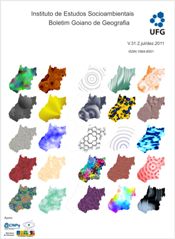THE NATURAL AND ENVIRONMENTAL VULNERABILITY OF THE CITY OF FORTALEZA/CE
DOI:
https://doi.org/10.5216/bgg.v31i2.16842Abstract
The limitations imposed by environmental systems have rarely been taken fully into account during the occupation and development of cities anywhere in the World. In the present day, there is a growing need to consider these limitations in order to guarantee environmental quality for the inhabitants of this territorial space, as well as to ensure the avoidance of future environmental risks. In this context, the present study focused on the natural and environmental vulnerability of the municipality of Fortaleza, in the Brazilian state of Ceará, with the primary aim of contributing to the urban-environmental planning of the city. To this end, the areas of the municipality most vulnerable to anthropogenic impacts will be identified, as will the potential of its environmental systems. Based on the ecodynamic approach (founded on the concepts of the stability/instability of environments), integrated with considerations on the quality of the urban infrastructure, a Geographic Information System approach was developed for the production and integration of maps covering the geology, geomorphology, pedology, vegetation cover, and quality of the urban infrastructure. These analyses provided maps of the natural and environmental vulnerability of Fortaleza, which indicate that the most vulnerable areas are located in the proximity of rivers, lakes, and dune fields, where the urban infrastructure is precarious, and thus subject to greater risks.Downloads
Downloads
Published
How to Cite
Issue
Section
License
Authors will not receive any payment for publishing their work in Boletim Goiano de Geografia. Therefore, they must grant all rights to the journal. However, they are entirely and exclusively responsible for the published contents, and editors are free to make corrections or adjustments to texts in conformity with publication guidelines.







